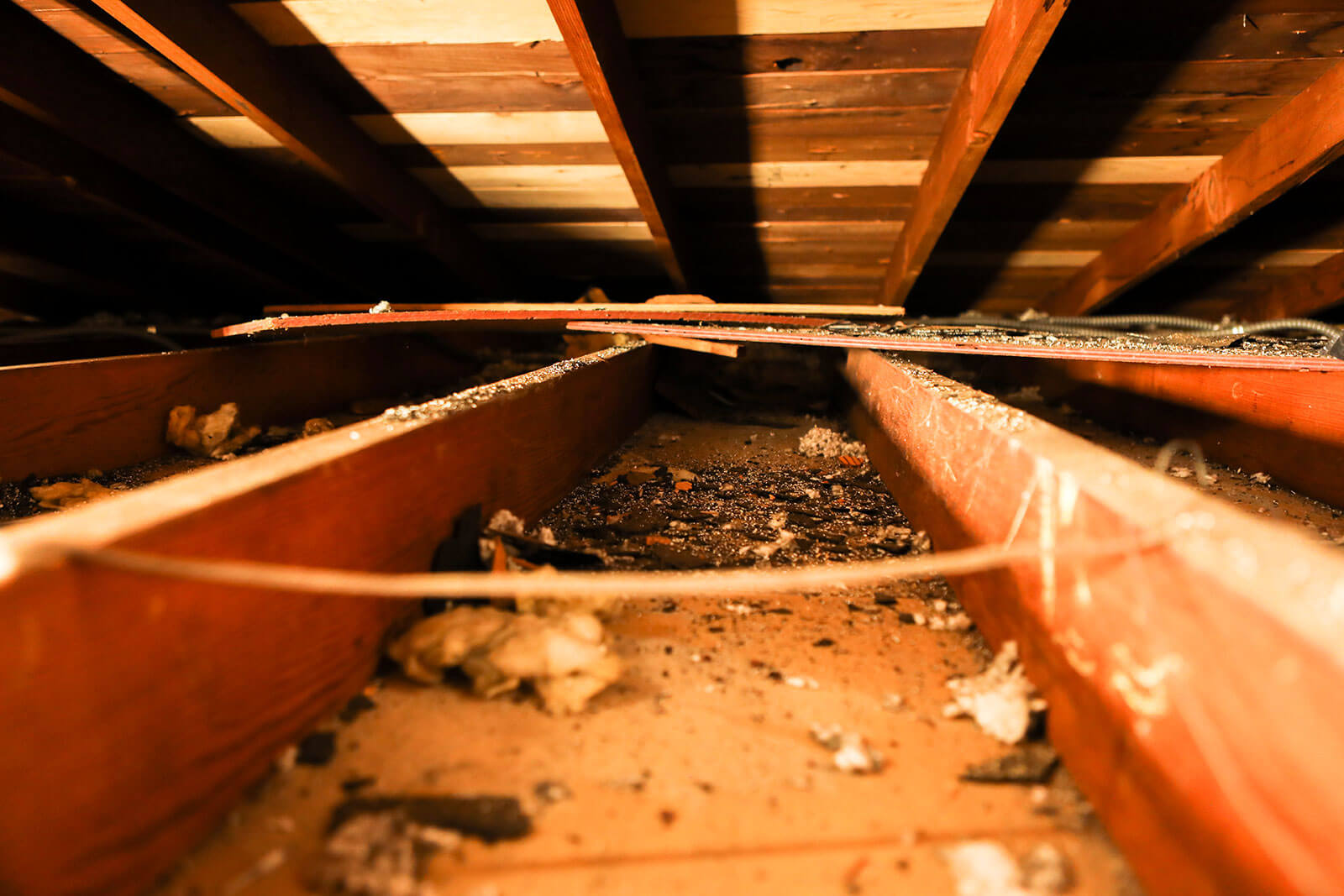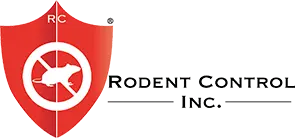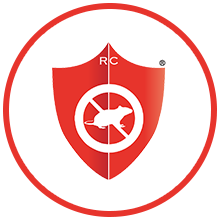
Signs Your Attic Insulation Needs Replacement After a Rodent Infestation
Rodents are more than just a nuisance — they’re a serious threat to your home’s insulation and your family’s health. When rats, mice, or squirrels invade your attic, they don’t just leave droppings and chew wires; they can also contaminate your insulation, compromising your home’s energy efficiency and introducing hazardous contaminants. Knowing when to replace attic insulation after a rodent infestation is key to restoring a safe and healthy environment.
In this blog post, we’ll cover the common signs of rodent-damaged insulation, health risks involved, and why professional attic insulation replacement is essential after rodent contamination.
Understanding Rodent Damage in Attic Insulation
Rodents thrive in dark, quiet spaces, making your attic an ideal nesting ground. Unfortunately, their presence often leads to extensive insulation damage. Rodent damaged insulation typically results from nesting behaviors, constant chewing, and the accumulation of urine and droppings.
Rodents often burrow into fiberglass or cellulose insulation to build their nests, tearing apart the material and compressing it, which reduces its R-value (thermal resistance). In addition, rodent urine in insulation saturates the material with foul odors and harmful bacteria, making it not only ineffective but also unsafe.
In many cases, insulation damage from rodents isn’t limited to one spot. The contamination can spread throughout the attic, requiring a full insulation removal and replacement to ensure the space is clean and safe.
Key Signs of Rodent Infestation in Attic Insulation
If you’re wondering whether your attic insulation needs replacement, these are the telltale signs of rodent activity:
1. Foul Odors Coming from the Attic
Rodent urine and droppings emit a strong, persistent ammonia-like smell. Even after rodents are removed, this odor can linger if the insulation has absorbed the waste. This is especially noticeable during warmer months when the attic heats up, intensifying the stench.
2. Droppings and Urine Stains
Droppings are the most obvious indicator of a rodent infestation. If you notice droppings embedded in or around the insulation, it’s a strong sign that the rodents have been nesting there. Urine stains, though harder to spot, may appear as dark patches on insulation material.
3. Shredded or Compressed Insulation
Rodents tend to burrow through and shred insulation to create nesting spots. This activity not only damages the material but also leads to uneven insulation coverage, resulting in energy inefficiency and temperature fluctuations throughout your home.
4. Scratching or Scurrying Noises
Hearing scratching sounds at night coming from your ceiling or attic is often a clue that rodents are active in your insulation. If left unchecked, their activity can quickly escalate into major insulation contamination.
5. Insulation Displacement
Rodents tend to push insulation aside as they move or nest, especially in blown-in insulation types. If certain areas of your attic appear less insulated or show uneven insulation distribution, rodent activity could be the culprit.
Health Risks of Contaminated Attic Insulation
Rodent contamination goes beyond insulation damage. It poses significant health threats due to exposure to bacteria, viruses, and allergens. Replacing insulation after rodents isn’t just a matter of comfort — it’s about protecting your household’s well-being.
Hantavirus and Other Rodent-Borne Diseases
Rodent droppings and urine can carry serious diseases like hantavirus, leptospirosis, and salmonella. These illnesses can be transmitted through airborne particles when contaminated insulation is disturbed.
Air Quality and Respiratory Issues
Contaminated attic insulation affects indoor air quality. As warm air rises through the house, it passes through the attic and circulates airborne pollutants from rodent waste throughout your home. This can exacerbate allergies, asthma, and other respiratory problems, particularly in children and the elderly.
Parasites and Insects
Rodents often bring fleas, mites, and ticks into the attic. These parasites can migrate into your living space and cause additional health issues for both humans and pets.
When to Replace Attic Insulation After a Rodent Infestation
The moment you confirm rodent activity in your attic, it’s crucial to assess the extent of insulation contamination. Here’s when insulation replacement becomes necessary:
1. Severe Contamination
If there’s widespread presence of droppings, urine, or nesting material throughout the attic, the insulation is beyond salvageable. Attempting to clean or disinfect it may not fully remove all toxins or odors.
2. Visible Mold or Moisture Damage
Rodent urine introduces moisture into the insulation, which can foster mold growth. If insulation appears damp or shows signs of mold, it’s unsafe to leave it in place and should be replaced immediately.
3. Loss of Insulation Efficiency
Compressed or shredded insulation can no longer perform its function. If your home feels drafty, your HVAC bills have increased, or you’ve noticed uneven temperatures, it’s likely your insulation’s R-value has been compromised due to rodent damage.
The Process of Attic Insulation Removal and Replacement
Addressing rodent-damaged insulation involves more than just swapping out old material for new. Here’s a breakdown of what a professional attic restoration includes:
1. Inspection and Assessment
A thorough inspection identifies all contaminated areas and evaluates the structural integrity of your attic. This step ensures no areas are overlooked during cleanup and insulation replacement.
2. Safe Insulation Removal
Old insulation contaminated with rodent waste is carefully removed using specialized vacuum systems and safety gear to prevent the spread of airborne contaminants.
3. Attic Cleanup and Decontamination
Once the insulation is removed, technicians sanitize the attic to eliminate lingering bacteria, viruses, and odors. This may involve antimicrobial treatments and deodorization sprays to neutralize rodent scent trails, which could otherwise attract new pests.
4. Sealing Entry Points
To prevent a recurring infestation, all rodent entry points — such as gaps in eaves, vents, or roof lines — are sealed using durable materials like steel mesh or metal flashing.
5. Installing New Insulation
Finally, high-quality insulation is installed to restore your attic’s thermal barrier. Many homeowners opt for pest-resistant insulation products that are less attractive to rodents in the future.
Why Professional Help Matters
Replacing insulation after a rodent infestation isn’t a DIY job. Aside from the health risks involved in handling contaminated materials, it takes professional equipment and experience to ensure full decontamination and effective insulation installation.
Companies like Rodent Control Inc specialize in rodent infestation cleanup and attic restoration. Their technicians are trained to safely remove contaminated insulation, disinfect affected areas, and install efficient, pest-resistant insulation that keeps your home safe and comfortable year-round.
Conclusion: Don’t Ignore the Signs — Protect Your Home and Health
Rodent infestations are more than just an inconvenience — they silently compromise your home’s insulation, air quality, and safety. If you’ve noticed odors, droppings, shredded insulation, or signs of infestation in your attic, don’t wait until the damage spreads. Replacing attic insulation after a rodent invasion is a crucial step in restoring your home’s integrity and protecting your family from potential health risks.
Need Expert Attic Restoration After a Rodent Infestation?
Rodent Control Inc is your trusted partner for comprehensive attic cleanup and insulation replacement. With industry-leading equipment, proven rodent-proofing strategies, and eco-friendly materials, we’ll restore your attic to a clean, safe, and energy-efficient space.
Contact Rodent Control Inc today to schedule a free inspection and take the first step toward a rodent-free, healthier home.




